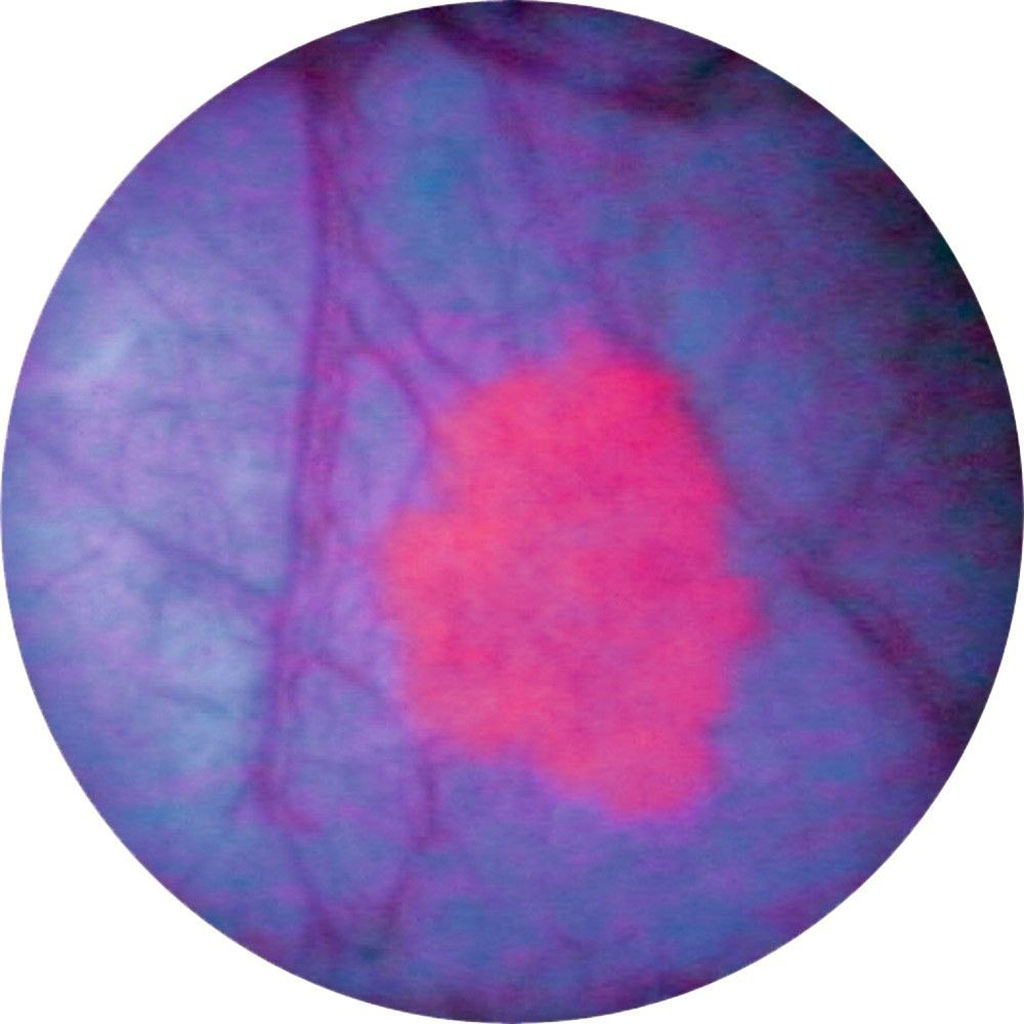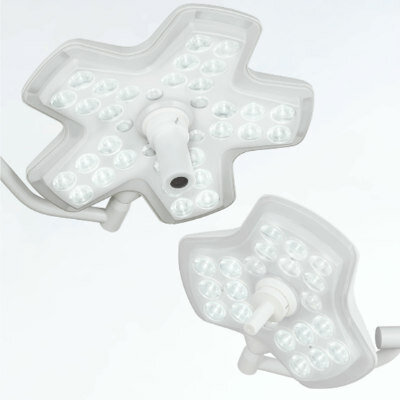Blue Light Cystoscopy Significantly Decreases Recurrence Risk in Bladder Cancer Patients
|
By HospiMedica International staff writers Posted on 23 Mar 2023 |

Bladder cancer is a significant global health concern, ranking as the 8th most common cancer worldwide and the 5th most common in men. In 2020, there were 1,720,000 prevalent cases (5-year prevalence rate), 573,000 new cases, and over 200,000 deaths attributed to the disease. Men are more likely to be affected, accounting for approximately 75% of all cases. Bladder cancer also has a high recurrence rate, with up to 61% of patients experiencing recurrence within the first year and up to 78% over five years. Furthermore, it has the highest lifetime treatment costs per patient among all cancers, as patients often undergo multiple cystoscopies due to the high risk of recurrence. Improved diagnosis and management strategies for bladder cancer are urgently needed to benefit both patients and healthcare systems. Now, two new studies have highlighted the benefits of the Blue Light Cystoscopy (BLC) procedure in bladder cancer management.
Hexvix/Cysview from Photocure ASA (Oslo, Norway) is a drug that preferentially accumulates in cancer cells in the bladder, making them glow bright pink during BLC. BLC with Hexvix/Cysview, as compared to standard white light cystoscopy alone, improves tumor detection and results in more complete resection, less residual tumors, and better management. A new study using real-world data from the BLC with Cysview Registry, the largest non-muscle-invasive bladder cancer registry in the U.S., has demonstrated that using BLC considerably reduced the risk of recurrence and prolonged time to recurrence in comparison to White Light alone. Furthermore, BLC in patients with primary tumors extended time to recurrence as compared to recurrent patients, indicating that BLC’s earlier use could result in more favorable long-term outcomes in a real-world setting.
In addition, a pilot study of bladder cancer patients at the Aarhus University Hospital (Aarhus, Denmark) showed that BLC with Hexaminolevulinate (HAL) during trans-urethral resection of bladder tumors (TURBT) could influence the immune cell composition and tumor microenvironment. According to the preliminary findings, BLC-guided TURBT alters the expression of immune cells of both the adaptive and innate immune system in comparison to WLC-guided TURBT. However, further studies will be needed to validate the clinical impact of these observations.
“These new study results continue to emphasize the importance of performing a thorough TURBT using Blue Light Cystoscopy in the treatment of bladder cancer, and also demonstrate the strong interest from the scientific community to investigate Hexvix/Cysview's potential immunologic effects in bladder cancer management,” said Dan Schneider, President and CEO of Photocure. “BLC has been shown to clinically increase TURBT quality, more accurately stage disease for treatment, and enable better recurrence monitoring, supporting the long-term utility to help improve the lives of patients with bladder cancer.”
Related Links:
Photocure ASA
Aarhus University Hospital
Latest Surgical Techniques News
- Robotic Assistant Delivers Ultra-Precision Injections with Rapid Setup Times
- Minimally Invasive Endoscopic Surgery Improves Severe Stroke Outcomes
- Novel Glue Prevents Complications After Breast Cancer Surgery
- Breakthrough Brain Implant Enables Safer and More Precise Drug Delivery
- Bioadhesive Sponge Stops Uncontrolled Internal Bleeding During Surgery
- Revolutionary Nano Bone Material to Accelerate Surgery and Healing
- Superior Orthopedic Implants Combat Infections and Quicken Healing After Surgery
- Laser-Based Technique Eliminates Pancreatic Tumors While Protecting Healthy Tissue
- Surgical Treatment of Severe Carotid Artery Stenosis Benefits Blood-Brain Barrier
- Revolutionary Reusable Duodenoscope Introduces 68-Minute Sterilization
- World's First Transcatheter Smart Implant Monitors and Treats Congestion in Heart Failure
- Hybrid Endoscope Marks Breakthrough in Surgical Visualization
- Robot-Assisted Bronchoscope Diagnoses Tiniest and Hardest to Reach Lung Tumors
- Diamond-Titanium Device Paves Way for Smart Implants that Warn of Disease Progression
- 3D Printable Bio-Active Glass Could Serve as Bone Replacement Material
- Spider-Inspired Magnetic Soft Robots to Perform Minimally Invasive GI Tract Procedures
Channels
Critical Care
view channel
CPR Guidelines Updated for Pediatric and Neonatal Emergency Care and Resuscitation
Cardiac arrest in infants and children remains a leading cause of pediatric emergencies, with more than 7,000 out-of-hospital and 20,000 in-hospital cardiac arrests occurring annually in the United States.... Read more
Ingestible Capsule Monitors Intestinal Inflammation
Acute mesenteric ischemia—a life-threatening condition caused by blocked blood flow to the intestines—remains difficult to diagnose early because its symptoms often mimic common digestive problems.... Read more
Wireless Implantable Sensor Enables Continuous Endoleak Monitoring
Endovascular aneurysm repair (EVAR) is a life-saving, minimally invasive treatment for abdominal aortic aneurysms—balloon-like bulges in the aorta that can rupture with fatal consequences.... Read more
Wearable Patch for Early Skin Cancer Detection to Reduce Unnecessary Biopsies
Skin cancer remains one of the most dangerous and common cancers worldwide, with early detection crucial for improving survival rates. Traditional diagnostic methods—visual inspections, imaging, and biopsies—can... Read morePatient Care
view channel
Revolutionary Automatic IV-Line Flushing Device to Enhance Infusion Care
More than 80% of in-hospital patients receive intravenous (IV) therapy. Every dose of IV medicine delivered in a small volume (<250 mL) infusion bag should be followed by subsequent flushing to ensure... Read more
VR Training Tool Combats Contamination of Portable Medical Equipment
Healthcare-associated infections (HAIs) impact one in every 31 patients, cause nearly 100,000 deaths each year, and cost USD 28.4 billion in direct medical expenses. Notably, up to 75% of these infections... Read more
Portable Biosensor Platform to Reduce Hospital-Acquired Infections
Approximately 4 million patients in the European Union acquire healthcare-associated infections (HAIs) or nosocomial infections each year, with around 37,000 deaths directly resulting from these infections,... Read moreFirst-Of-Its-Kind Portable Germicidal Light Technology Disinfects High-Touch Clinical Surfaces in Seconds
Reducing healthcare-acquired infections (HAIs) remains a pressing issue within global healthcare systems. In the United States alone, 1.7 million patients contract HAIs annually, leading to approximately... Read moreHealth IT
view channel
Printable Molecule-Selective Nanoparticles Enable Mass Production of Wearable Biosensors
The future of medicine is likely to focus on the personalization of healthcare—understanding exactly what an individual requires and delivering the appropriate combination of nutrients, metabolites, and... Read moreBusiness
view channel
Philips and Masimo Partner to Advance Patient Monitoring Measurement Technologies
Royal Philips (Amsterdam, Netherlands) and Masimo (Irvine, California, USA) have renewed their multi-year strategic collaboration, combining Philips’ expertise in patient monitoring with Masimo’s noninvasive... Read more
B. Braun Acquires Digital Microsurgery Company True Digital Surgery
The high-end microsurgery market in neurosurgery, spine, and ENT is undergoing a significant transformation. Traditional analog microscopes are giving way to digital exoscopes, which provide improved visualization,... Read more
CMEF 2025 to Promote Holistic and High-Quality Development of Medical and Health Industry
The 92nd China International Medical Equipment Fair (CMEF 2025) Autumn Exhibition is scheduled to be held from September 26 to 29 at the China Import and Export Fair Complex (Canton Fair Complex) in Guangzhou.... Read more












